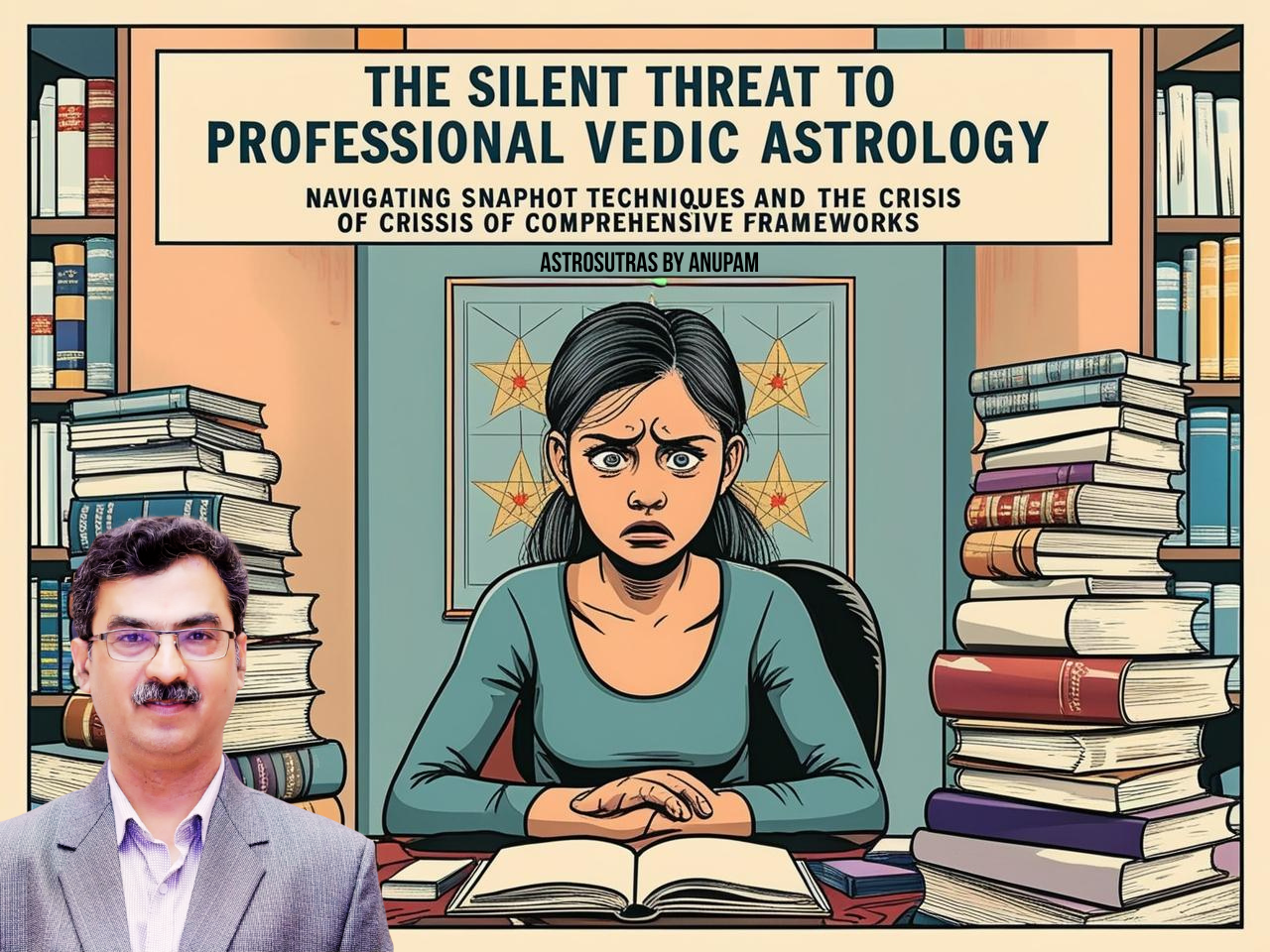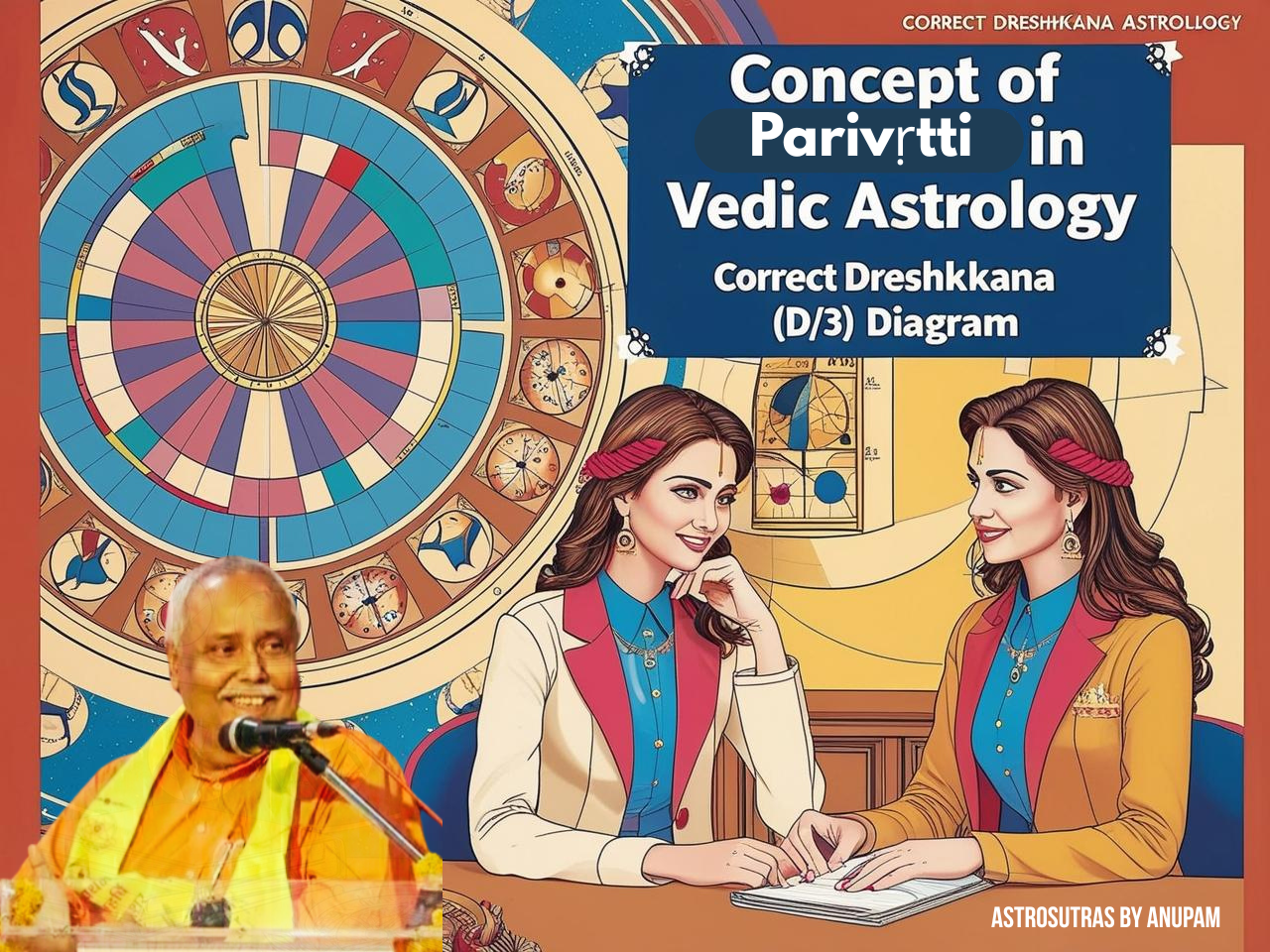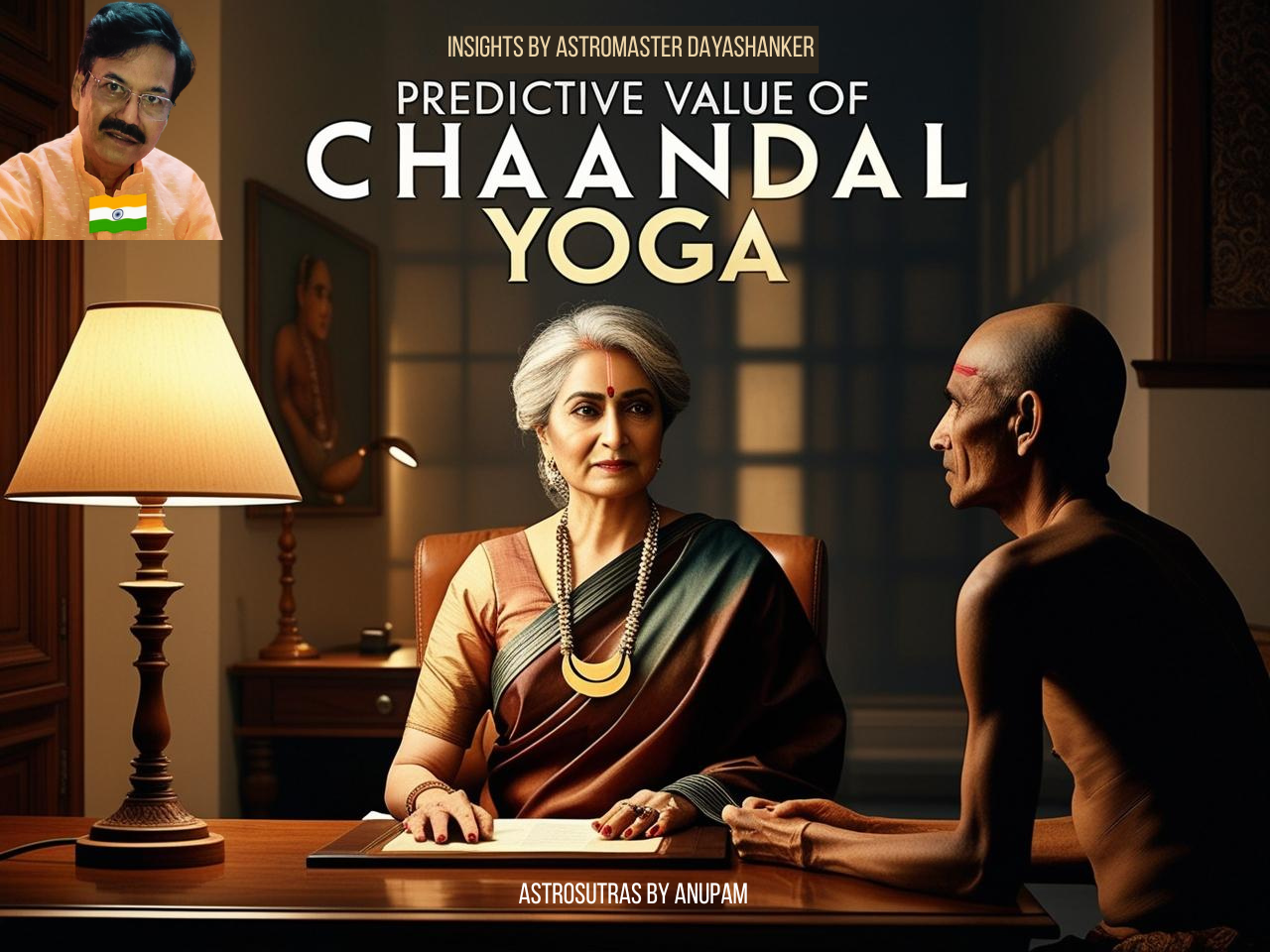The Silent Threat to Professional Vedic Astrology: Navigating Snapshot Techniques and the Crisis of Comprehensive Frameworks

In today’s high-performance astrological environment, traditional Vedic astrologers find themselves facing unprecedented challenges. The emergence and dominance of snapshot techniques, particularly horary-based system astrology like KP (Krishnamurti Paddhati), have created a new benchmark for speed and precision(self declared/attested) that traditionalists struggle to meet. Here we will examine the roots of this silent threat, the problems arising from the incomplete understanding of astro-sutras, the missing bridge between Jataka Shastra and event timing through Dasha systems, and calls for a rethinking of the training and grooming system for Vedic astrologers to preserve the discipline’s relevance and integrity.
The traditional practice of Vedic astrology (Jyotisha) has historically been a discipline requiring years of dedicated study, reflection, and experiential wisdom. However, in a professional world increasingly obsessed with speed, precision, and performance, Vedic astrologers now operate under constant pressure. This pressure emanates largely from the rise of system-based astrological techniques, especially snapshot or horary-centric methods like KP astrology, which promise quick and seemingly accurate results through mechanical algorithmic rules.
The growing gap between the layered, interpretive demands of classical Vedic astrology and the modular, snapshot appeal of modern systems has created a silent existential threat to traditional astrologers. To understand this phenomenon, we must first revisit how Vedic astrologers were traditionally groomed, how the spread and application of core astrological texts occurred, and where systemic gaps have crept into the contemporary educational process.
1. Traditional Grooming of a Vedic Astrologer
Historically, the grooming of a Vedic astrologer involved deep, methodical immersion into:
- Understanding the Ascendant (Lagna) and the foundational structure of signs, houses, and planets,
- Deciphering yogas and combinations (astro-sutras) described in classical texts such as Brihat Parashara Hora Shastra, Phaladeepika, Jataka Parijata, and Saravali,
- Gradually integrating the principles of timing events through dasha systems and transits.
The initial toolkit of the astrologer focused on understanding Jataka Shastra — the static promises embedded in a natal chart — and only later developing dynamic forecasting skills through Dasha analysis.
Today, however, this grooming often happens indirectly through:
- Books,
- A few institutional courses,
- And “social media universities” that offer fragmented, often oversimplified teachings.
The erosion of systematic mentorship and rigorous, sequential training has led to fundamental weaknesses in the preparation of professional Vedic astrologers.
2. The Spread and Misinterpretation of Core Texts
After grasping the basics of Ascendant analysis, modern aspirants quickly move toward studying yogas and combinations. Core books listing various yogas become the aspirant’s primary focus. However, practical application reveals an immediate problem:
- The yogas and sutras are applied without understanding the prerequisite conditions for their manifestation.
- The environmental context (Desha, Kaala, Patra — place, time, person) is ignored.
- The comprehensive framework or rule set underlying each sutra is rarely understood.
Thus, the very foundation of precise astrology is weakened, because standalone sutras are treated as absolute promises rather than conditional theorems.
This ill-understanding seeds the first major threat: the astrologer’s predictions become inconsistent, leading to a crisis of credibility — especially when compared to the mechanically precise outputs of KP and similar systems.
3. Standalone Sutra Dictums and the Crisis of Comprehensiveness
The failure of standalone sutra dictums to comprehensively analyze horoscopes without contextual filtering is a direct source of pressure on Vedic astrologers.
Whereas KP and horary-based systems offer:
- Defined rules,
- Algorithmic approaches,
- Objective checkpoints,
the traditional Vedic method appears subjective, layered, and slower — thus less “market-friendly.”
In a performance-driven astrological market, this gap in delivery style translates into a gap in perceived reliability, putting additional strain on traditionally groomed astrologers.
4. The Missing Bridge: Jataka Analysis and Dasha Timing
Once the basic Jataka promise is analyzed, the astrologer must transition to dynamic prediction through dasha systems.
However, the bridge between Jataka and Dasha remains largely silent and undocumented. As a result:
- Planetary dignities identified in Jataka are not systematically filtered into Dasha sequences.
- The astrologer struggles to determine which yoga will fructify during which period.
- Conflicting datasets emerge, leading to predictive failures and loss of confidence.
This failure to establish a clear methodological bridge causes the astrologer to search desperately for shortcuts or alternative systems that offer immediate validation — thus making them vulnerable to snapshot systems.
5. The Third Layer of Complexity: Exposure to Advanced Tools
During the next phase of his journey, the aspirant encounters:
- Upagrahas (subsidiary planets),
- Shadbala (six-fold strength calculation),
- Divisional charts (Vargas) and their intricate interpretive rules,
- Avasthas (states of planets),
- Ashtakavarga (point-based systems for transit strength evaluation).
However, without a clear, structured training linking:
- Foundational static analysis (Jataka),
- Dynamic event timing (Dasha),
- Environmental modifications (Divisional charts, Shadbala, etc.),
the aspirant accumulates conflicted and noisy datasets, leading to greater confusion and prediction errors.
Without institutional safeguards, these aspirants are left vulnerable and frustrated. Seeing no easy solution within the classical framework, many abandon traditional methods in favor of system-based approaches.
6. The Market Pressure and the Survival Question
Today’s astrology market demands:
- Quick answers,
- Binary clarity (“Yes” or “No”),
- High performance under pressure.
While Vedic astrology offers profound philosophical and psychological depth, it often struggles to match the speed and precision promised by KP and similar modular systems.
Astrology institutions, senior gurus, and traditional communities must ask themselves:
- Are we transparently explaining the vastness and complexity of Vedic astrology to aspirants?
- Are we developing systems to make Vedic astrology usable in the professional market?
- Are we equipping aspirants with survival kits — pragmatic tools to retain the soul of Vedic astrology while ensuring market viability?
If not, we risk creating a generation of knowledge seekers who either:
- Get trapped in endless academic idealism with no professional outlet,
- Or shift en masse (all together) to system-based astrology simply to survive.
Conclusion
The silent crisis facing professional Vedic astrologers stems not only from external threats but from internal structural gaps: the misinterpretation of sutras, the missing bridge between Jataka and timing, and the lack of coherent advanced training.
To preserve the dignity, depth, and relevance of Vedic astrology, it is imperative to:
- Reform grooming practices,
- Develop transparent, layered, and sequential teaching methods,
- Create bridges between static and dynamic prediction layers,
- And equip aspirants with survival tools to thrive in today’s astro-market without losing the soul of the discipline.
The time for introspection, restructuring, and academic rigor has arrived. If ignored, the very survival of professional Vedic astrology as a respected predictive science is at risk.

